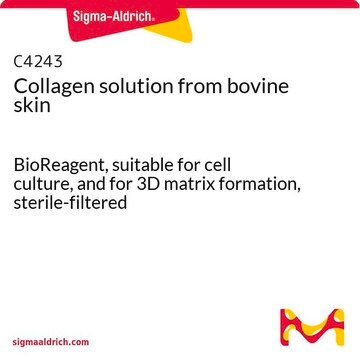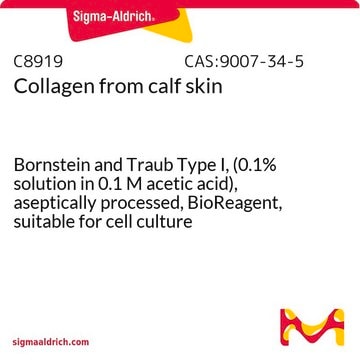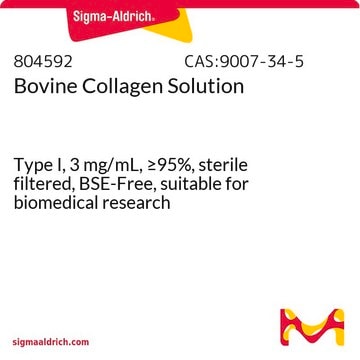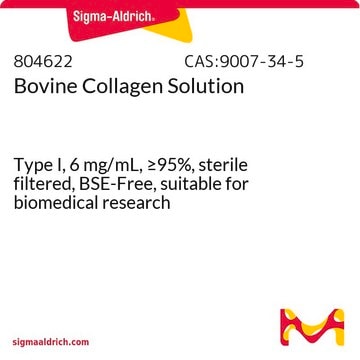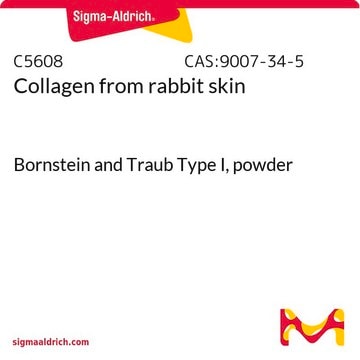C2124
Bovine Collagen Type I
from bovine skin, liquid, 6 mg/mL, suitable for cell culture, used for 3D gel formation
About This Item
Recommended Products
product name
Collagen solution from bovine skin, Type I, 6 mg/mL, sterile-filtered, BioReagent, and for 3D matrix formation., suitable for cell culture
biological source
bovine skin
Quality Level
sterility
sterile-filtered
product line
BioReagent
form
liquid
packaging
pkg of 50 mL
concentration
6 mg/mL
technique(s)
cell culture | mammalian: suitable using and for 3D matrix formation.
surface coverage
6‑10 μg/cm2
Binding Specificity
Peptide Source: Collagen
Peptide Source: Elastin
Peptide Source: Fibronectin
foreign activity
endotoxin ≤1.0 μmole/min-mg protein
shipped in
wet ice
storage temp.
2-8°C
Looking for similar products? Visit Product Comparison Guide
Related Categories
General description
Application
Biochem/physiol Actions
Components
Preparation Note
Other Notes
Storage Class Code
10 - Combustible liquids
WGK
nwg
Flash Point(F)
Not applicable
Flash Point(C)
Not applicable
Certificates of Analysis (COA)
Search for Certificates of Analysis (COA) by entering the products Lot/Batch Number. Lot and Batch Numbers can be found on a product’s label following the words ‘Lot’ or ‘Batch’.
Already Own This Product?
Find documentation for the products that you have recently purchased in the Document Library.
Customers Also Viewed
Articles
Extracellular matrix proteins such as laminin, collagen, and fibronectin can be used as cell attachment substrates in cell culture.
Our team of scientists has experience in all areas of research including Life Science, Material Science, Chemical Synthesis, Chromatography, Analytical and many others.
Contact Technical Service